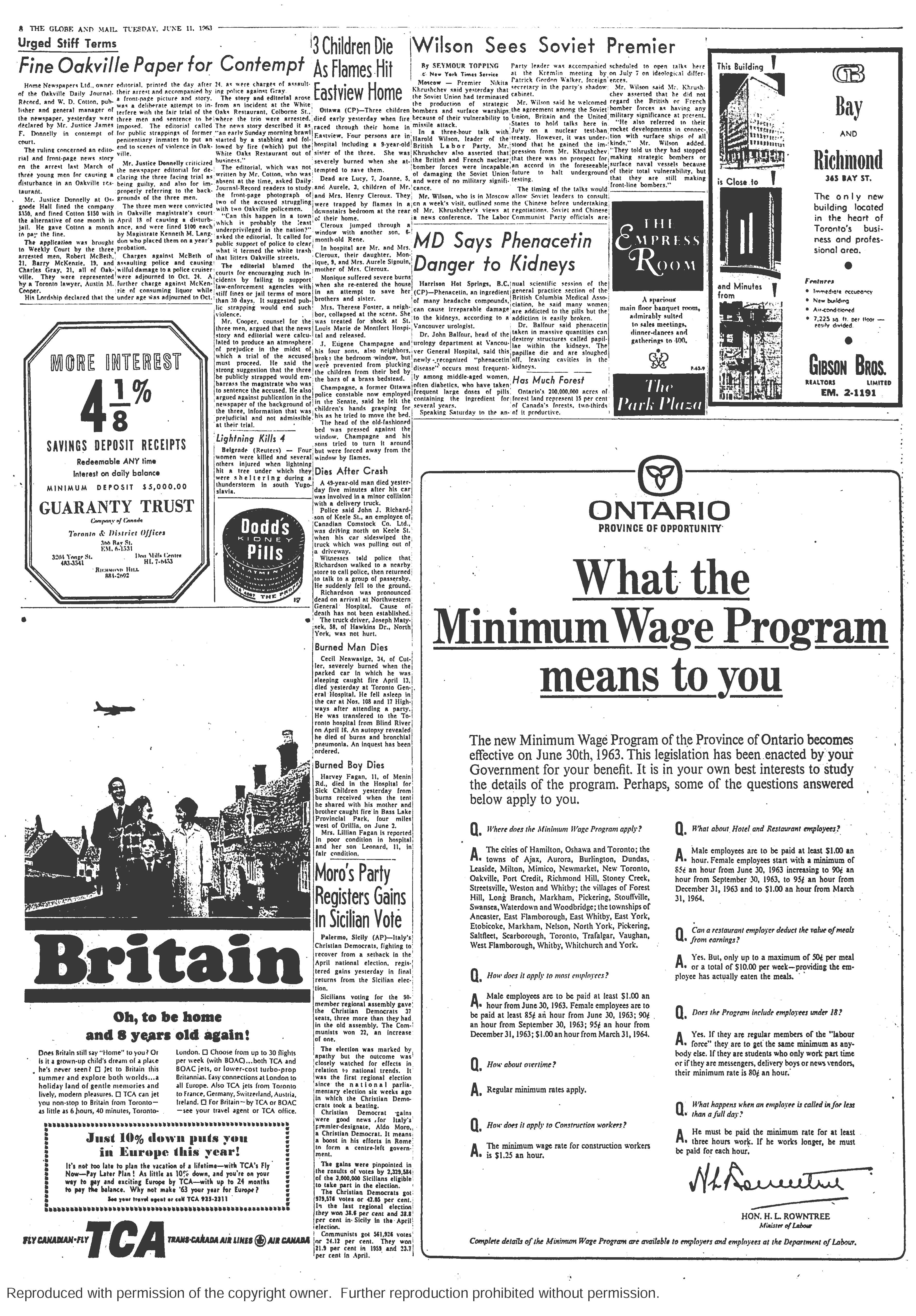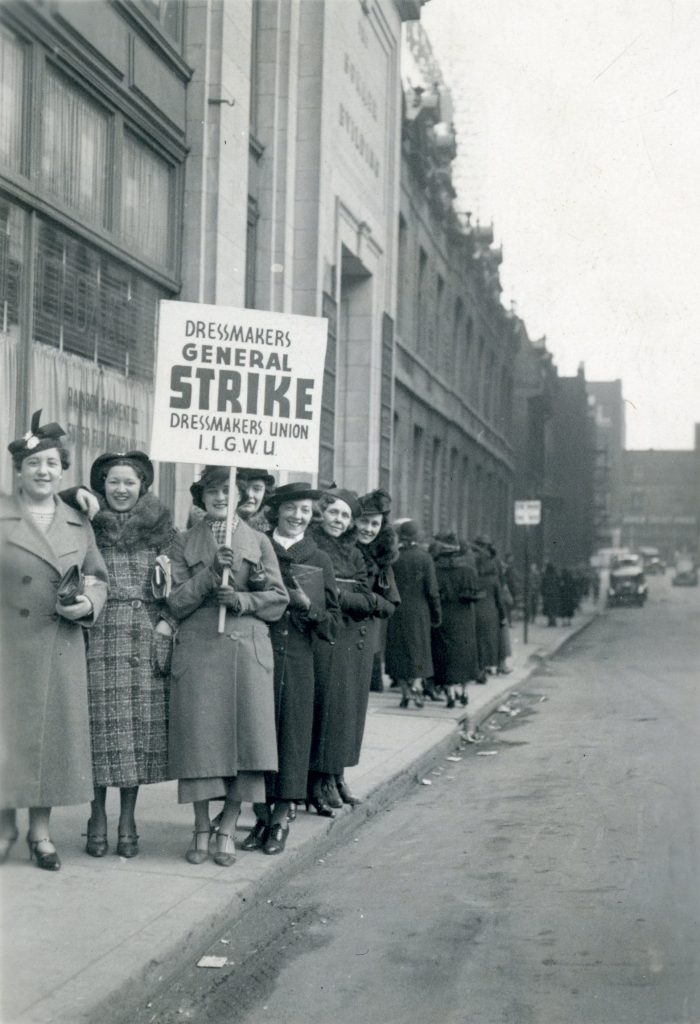Whether it is for the increase of its value or even its effectiveness, the minimum wage has been a matter of discussion since it was introduced in Ontario over 50 years ago.
In Canada, the minimum hourly rate was first established in 1918, in British Columbia, with the Women’s Minimum Wage Act. The law was a way of protecting against the exploitation of women and children who worked in the factories and industry. In an article published by the Globe and Mail, the president of the Ontario Federation of Labor at that time, David Archer, called the Act a “welfare measure.”

In 1963 the Ontario government introduced a new minimum wage law that included men. The minimum wage was proposed by the Labor Minister Leslie Rowntree. Its establishment in Ontario was a recommendation of a report drafted by the Ontario Progressive Conservative Association. The idea was to protect workers from exploitation.
The new law was celebrated by the Ontario Federation of Labor. David Archer said to the Globe and Mail on the day of the announcement that they had been fighting for a minimum wage for a long time and for him the new Act a great victory.
One of the initial downsides was that the minimum wage was considered too low by Labor. Initially, the Ontario Federation of Labor had asked for a rate of $1.25 per hour, but the government set the minimum wage at $1. The rate was considered by union representatives to be insufficient even if an employee worked 40 hours per week.
The different rates paid by gender was one of the main topics of discussion in the new law. During the votes regarding the minimum wage in the beginning of that year, Liberals had tried to push the rate for $1.25 and had voted against the creation of different rates per gender, but they had lost their bid.

The vice-president of the Toronto and District Labor Council, Donald Montgomery told the Globe and Mail in 1963: “It [minimum wage] recognizes the established practice of less pay for women, who do the same work as men in spite of legislation establishing equal pay for equal work.” As a response, Labor Minister Rowntree said that to achieve parity the government needed to take step by step.
The Provincial Council of Women accused the government of Ontario of discrimination. At that time, the explanation for the different rates was that men were usually married and had a family to support, while women might be single. The representative of the Council, Mary Wood, responded to that excuse in an article published by the Globe and Mail in 1963: “plenty of single women have dependents.”
Meanwhile, employers were not pleased with the Minimum Wage Act. According to an article published by the Globe and Mail, restaurant owners said that with the new law they would need to raise the cost of meals, otherwise they would go out of business.
University of Ottawa’s economics professor Mario Seccareccia said that at that time, “it became deeply engraved this idea that minimum wages were not good for the economy in a sense that they created unemployment,” even tough there was no evidence of negative impact in the other provinces that had the minimum wage established in previous years.
According to Seccareccia, studies from the last twenty years have proven that the minimum wage increases the productivity other than creating unemployment.
In 2017 Ontario increased the minimum wage from $11.40 per hour to $14. In 2019 the province plans to make another increase to $15 an hour. This will be the highest growth of the minimum wage rate in the last 40 years.
*The spelling of the word “labour” in 1963 was “labor” in every newspaper article found.

